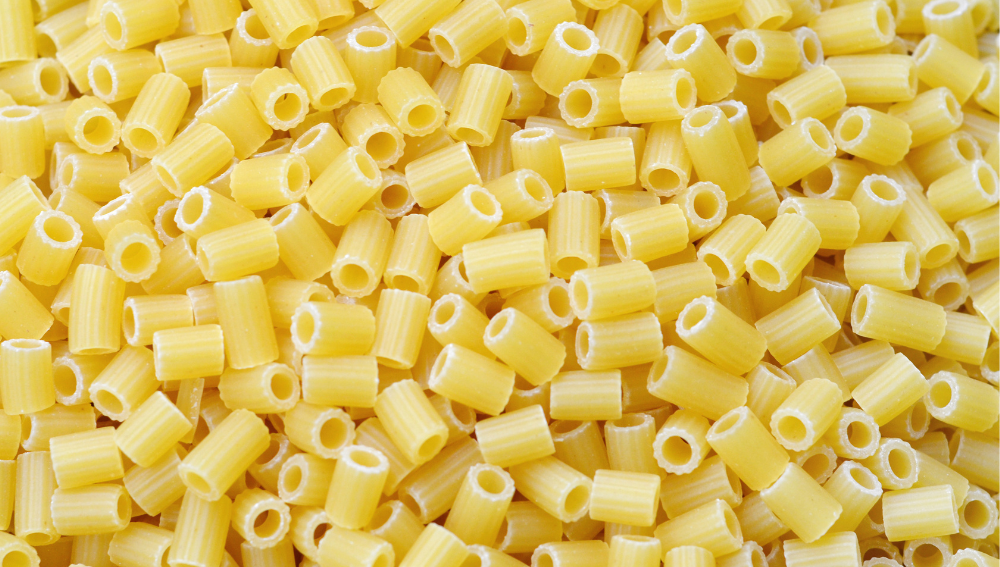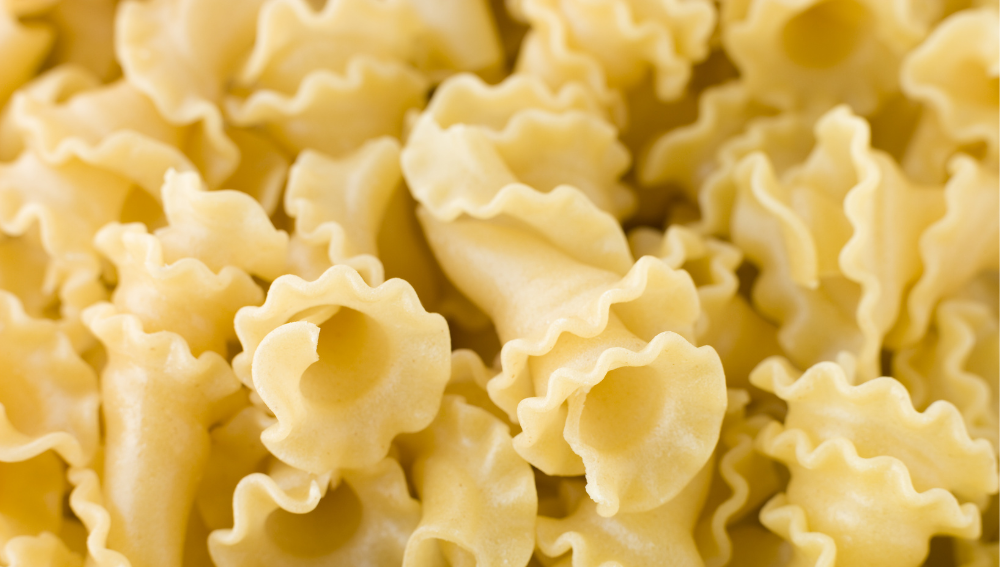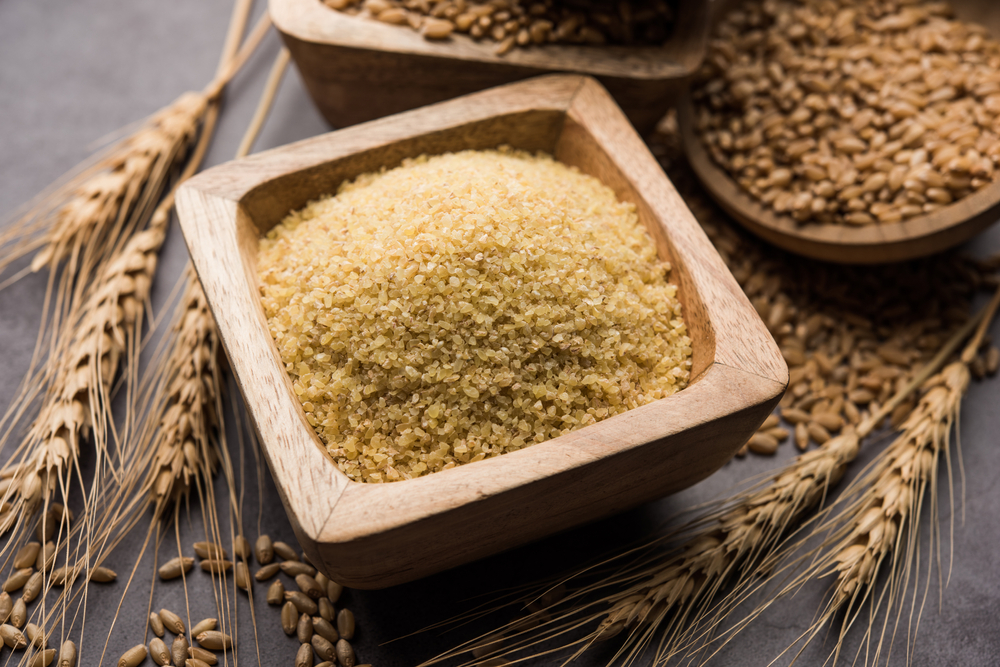Acini de pepe, the tiny, round pasta, is a popular choice for many recipes, including Italian soups and cold salads. Due to its small size and particular texture, it offers an ideal platform for flavor absorption and is an exciting addition to many dishes.
However, there may be occasions when you don’t have access to acini de pepe or simply prefer experimenting with an alternative.
Finding a suitable substitute for acini de pepe can be an enjoyable process, as there are a variety of options available.
From other pasta shapes and grains to more unique alternatives, you can find a range of options that cater to your specific tastes and culinary needs. By exploring various substitutes, you can expand your culinary horizons and discover new ways to create delicious and inventive dishes.
Key Takeaways
- Experiment with various pasta shapes and grains as acini de pepe substitutes
- Orzo, pastina variations, and couscous offer suitable alternatives
- Exploring unique substitutes like tubettini and ditalini can expand your culinary repertoire
Understanding Acini De Pepe
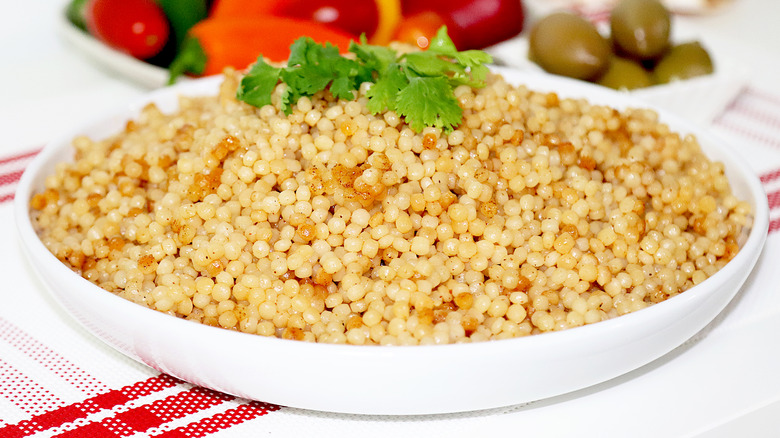
Acini de pepe is a type of Italian pasta that resembles small, round grains of rice. Made from semolina flour, a product of durum wheat, this pasta is known for its tiny size and unique texture, which allows it to absorb flavors from various ingredients used in soups, salads, and other dishes.
Semolina flour, the primary ingredient in making acini de pepe, gives the pasta its characteristic firmness and a slightly nutty flavor compared to other pasta types.
Durum wheat is a hard variety of wheat, and its high protein content and gluten strength make it an ideal choice for creating pasta with a firm texture that holds its shape well when cooked.
When looking for suitable substitutes for acini de pepe, it is essential to consider the pasta’s intended use in the dish in question. Different pasta shapes may offer unique textures and have varying sauce retention abilities, which could impact the final outcome of the recipe.
Some potential substitutes for acini de pepe include orzo, pastina, ditalini, and Israeli couscous. Orzo and pastina are Italian pasta varieties that share a similar rice-like shape and size, making them a fitting replacement in most dishes.
Ditalini is a small, tubular-shaped pasta ideal for soups and salads, where acini de pepe is often used. Israeli couscous, made from wheat flour, is larger and rounder than acini de pepe but can closely mimic the texture and mouthfeel of the original pasta.
In conclusion, understanding the characteristics of acini de pepe and its role in various dishes is crucial in selecting a suitable substitute. The key factors to consider include the pasta’s shape, size, texture, and sauce retention abilities.
By keeping these factors in mind, one can confidently choose an alternative that complements and enhances the intended dish.
Why Substitute Acini De Pepe?
Acini de pepe is a type of Italian pasta that is commonly used in various recipes, such as soups, salads, and side dishes. It is well-known for its small, round shape and the unique texture it adds to dishes.
However, there are several reasons why someone might seek a substitute for this ingredient.
One reason for substituting acini de pepe is its availability. Depending on the location and the local grocery stores, it can sometimes be difficult to find. In such cases, finding a suitable alternative can help in preparing a dish without compromising the overall flavor and texture.
Another reason to consider a substitute is dietary restrictions. Some individuals may have specific dietary needs or allergies that prevent them from consuming wheat-based pasta like acini de pepe. By choosing a suitable alternative, they can still enjoy their favorite dishes without any adverse reactions.
In addition, personal preferences play a role in the decision to substitute acini de pepe in a recipe. For some people, it might be the texture that doesn’t suit their palate, or they simply prefer a different type of pasta to use in their soups, salads, or side dishes.
Lastly, experimenting with different pasta shapes and sizes can be a fun way to bring new twists to traditional recipes. By trying out various acini de pepe substitutes, cooks can discover new flavors and textures that might enhance their dishes even further.
With these factors in mind, substituting acini de pepe can be done for various reasons and help in creating a satisfying culinary experience. It is essential to choose an appropriate substitute that closely matches its original flavor and texture to maintain the overall integrity of the dish.
Choosing the Right Substitute
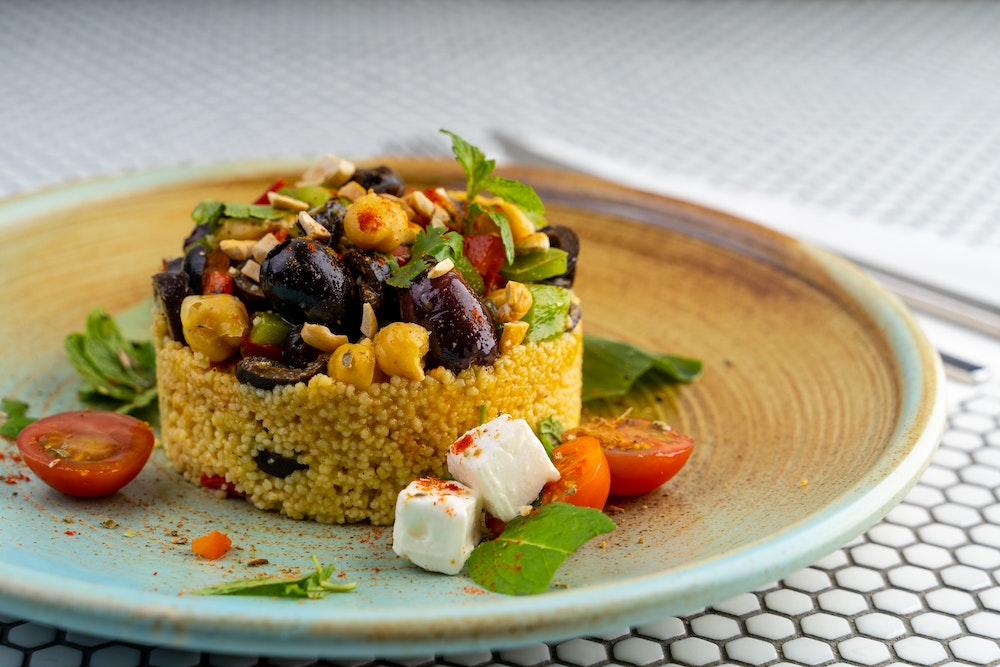
When looking for substitutes for acini de pepe in a recipe, it is essential to consider the dish’s overall texture and flavor. There are several options available to substitute acini de pepe, which vary in size and shape, but share similar characteristics.
Pearl Couscous (also known as Israeli couscous) is a popular choice as it closely resembles acini de pepe in shape and size. Because it is made from semolina flour like acini de pepe, the texture is similar, and it absorbs flavors well. Pearl couscous can be a suitable choice for both soups and pilafs.
Orzo is another alternative that can be used in a variety of recipes. Although it is shaped like a grain of rice, orzo is made from semolina flour and provides a similar mouthfeel to acini de pepe. It works well in soups, salads, and side dishes, offering versatility in its applications.
Fregola Sarda is an Italian pasta, similar to couscous in size and shape. Made from semolina flour and toasted, this substitute imparts a slightly nutty flavor to your dish. Fregola sarda is suitable for traditional Italian dishes like pasta salads and seafood dishes, as well as soups.
For those seeking a gluten-free option, quinoa can be an excellent substitute. This protein-rich grain is roughly the same size as acini de pepe; however, it does have a slightly nuttier taste.
Quinoa is versatile and can be successfully used in most recipes calling for acini de pepe, though it may alter the dish’s flavor slightly.
When selecting a substitute for acini de pepe in your recipe, consider the desired texture, flavor, and overall compatibility with the other ingredients in your dish. Each substitute offers unique qualities that can enhance and complement various recipes, ensuring that you can create delicious meals with confidence and ease.
Orzo as an Acini De Pepe Substitute
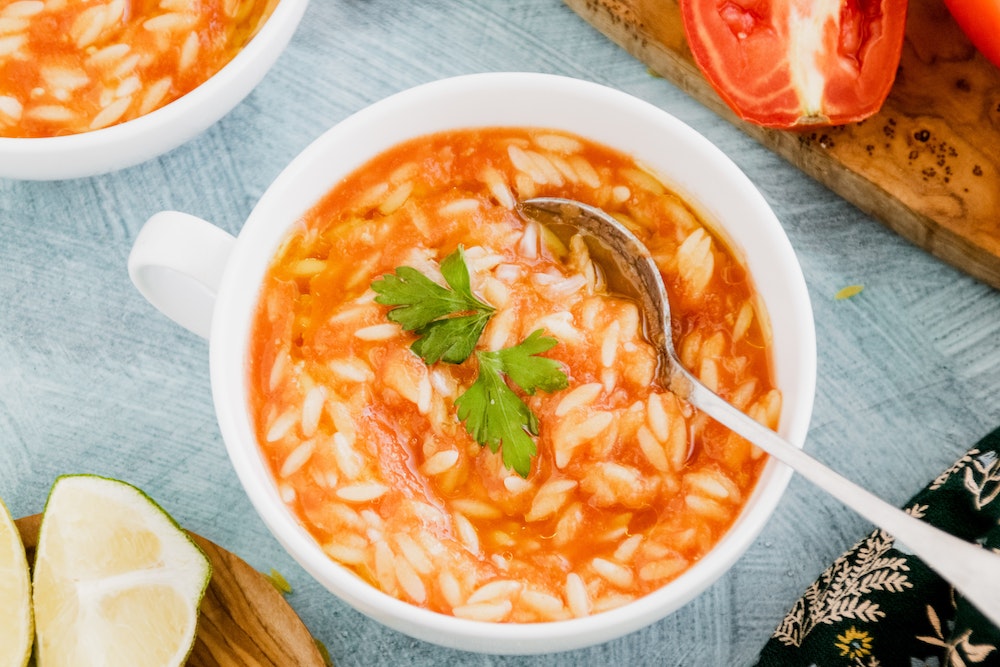
Orzo is a fantastic substitute for acini de pepe in many recipes. This small, rice-shaped pasta has a similar size and texture to acini de pepe, which makes it an excellent alternative when the latter is not available.
As a versatile pasta choice, orzo can easily be integrated into various dishes, seamlessly replacing acini de pepe without compromising the final outcome of the recipe.
When it comes to flavor, orzo pasta has a mild, nutty taste that complements a wide array of ingredients. The subtle flavor profile allows it to blend well with surrounding components and adapt to various cooking styles.
For instance, it can be used in soups, salads, and casseroles, much like acini de pepe. Moreover, orzo’s ability to absorb flavors from the accompanying ingredients ensures a delicious and satisfying meal.
In terms of cooking, orzo pasta has a relatively quick cooking time, which further adds to its appeal as a substitute for acini de pepe. To prepare orzo, simply boil it in a pot of salted water for approximately 8-10 minutes or until al dente. Drain the pasta and it is ready to be incorporated into the desired recipe.
Here are some tips for using orzo as an acini de pepe substitute in various dishes:
- Soups: Add cooked orzo to soups for a delightful texture and a filling component. The pasta will absorb the flavors of the broth, just like acini de pepe.
- Salads: Toss cooked, cooled orzo with fresh vegetables, herbs, and a light dressing for a refreshing salad option. It will hold its shape well and provide a satisfying bite.
- Casseroles: Orzo can be used in baked dishes in place of acini de pepe. Be sure to adjust the cooking time and liquid ratio accordingly to ensure the pasta cooks evenly and retains its shape.
In conclusion, orzo is an ideal acini de pepe substitute due to its similar size, texture, and mild flavor. Its versatility and easy integration into various recipes make it a practical and delicious alternative.
Pastina and Its Variations
Pastina is a popular pasta variety known for its small, delicate size. As a classic Italian staple, pastina is often used in a variety of soups and broths. It comes in several shapes, including stelline, anelli, and anellini. Each shape offers distinct characteristics, making them suitable for various recipes.
Stelline is perhaps the most common pastina shape. These tiny star-shaped pasta pieces are frequently added to clear broths or enjoyed in a simple preparation with butter and cheese. Due to its small size and shape, stelline cooks quickly and evenly resulting in tender, delicious bites.
Anelli is another pastina variety, known for its small ring-shaped pasta. It is often used in minestrone – a traditional Italian soup made with vegetables and pasta. The anelli’s unique shape helps to create a satisfying texture while allowing the pasta to soak up the flavors of the soup.
Anellini, a smaller version of anelli, is the perfect choice for Italian wedding soup. This particular soup is a flavorful combination of meatballs, vegetables, and broth, often served at special occasions such as weddings. Anellini’s small size and delicate texture complement the soup’s other ingredients without overpowering them.
Pastina makes an excellent substitute for acini de pepe in various recipes. It maintains a similar size and texture that works exceptionally well in a range of dishes, especially soups.
Depending on the recipe you choose, using an alternate pastina shape like stelline, anelli, or anellini can introduce delightful variations in both flavor and texture.
Finding the right pastina substitution for acini de pepe typically depends on the specific dish you are preparing. Review the recipe’s ingredients and consider how different pastina shapes might complement the dish.
Ultimately, experimenting with these versatile pasta varieties will enhance your culinary skills and expand the possibilities for future meal creations.
Couscous and Israeli Couscous as Substitutes
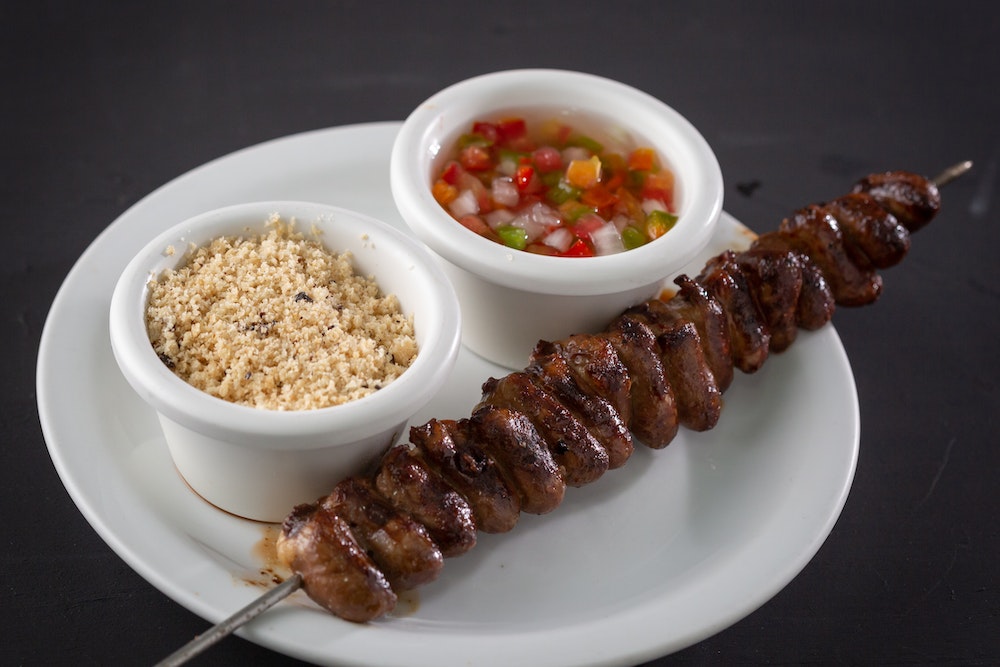
Couscous, a staple food in North African and Middle Eastern cuisines, is an excellent alternative to acini de pepe. Made from semolina flour, it has a slightly nutty flavor and a texture similar to pasta. It is simple to cook and absorbs flavors from the broth or sauce it’s cooked in, making it a versatile and practical substitute.
To use couscous as an acini de pepe substitute, prepare it according to the package instructions, ensuring to fluff it once cooked to prevent clumping. It can be added to various dishes, such as soup or skillet chicken, providing a delightful texture and adding a depth of flavor.
Another great option is Israeli couscous, also known as ptitim. This type of couscous is slightly larger than the traditional variety and closely resembles acini de pepe in both size and shape.
Similar to couscous, Israeli couscous absorbs flavors from whatever it is cooked in, allowing for a seamless transition when substituting in recipes.
To cook Israeli couscous, follow the package directions, which typically involve boiling it for a short period and then simmering until the liquid is absorbed. Once cooked, it can be seamlessly incorporated into a variety of dishes, whether soup or skillet chicken recipes, where acini de pepe would typically be used.
Both couscous and Israeli couscous maintain their structure well when cooked and can elevate a dish with their unique texture. Their ability to absorb the flavor of the broth or sauce they are cooked in makes them perfect substitutes for acini de pepe, without affecting the desired taste of a dish.
Unique Substitutes: Tubettini and Ditalini
When looking for a suitable substitute for acini de pepe, two unique options to consider are tubettini and ditalini. Both of these types of pasta are small in size, making them excellent alternatives for acini de pepe in various recipes.
Tubettini is a tiny, tube-shaped pasta that works well in soups and salads. Its small size allows it to cook quickly, just like acini de pepe. Tubettini is an excellent choice for dishes that require a pasta that can hold its shape and provide a pleasing texture.
Some popular dishes that can benefit from tubettini as an acini de pepe substitute include:
- Pasta e fagioli
- Minestrone soup
- Cold pasta salads
Ditalini, on the other hand, is a slightly larger cylindrical pasta that is often used in soups, stews, and pasta salads. Its size and shape make it an ideal option for dishes that require a slightly more substantial pasta without overwhelming the other ingredients.
Ditalini can be used in a variety of dishes, such as:
- Pasta e fagioli
- Minestrone soup
- Pasta salads with more robust ingredients
In summary, both tubettini and ditalini can serve as unique and versatile substitutes for acini de pepe, thanks to their small size and similar cooking properties. Depending on the specific dish and personal preferences, either of these options can be an excellent choice to enhance the texture and flavor of your meal.
Alternative Grains as Substitutes

Acini de pepe may not always be available in your pantry, or you might want to explore other choices for dietary preferences. There are other grains that can function as effective substitutes, and they have their perks. Here are a few grains that can come in handy when you need an alternative to acini de pepe:
Quinoa is an excellent choice for those looking for a gluten-free alternative. It is packed with protein and essential amino acids, making it a nutritious addition to any meal. To use quinoa as a substitute for acini de pepe, simply cook it according to the package instructions.
The average prep time for quinoa is 15 to 20 minutes, with total time taking about 25 to 30 minutes once it has finished cooking and absorbed the liquid.
Rice flour can be used in recipes that call for a pasta-like consistency, given its fine texture. This option is also gluten-free, and when cooked, it gives a thick, creamy texture to the dish.
To incorporate rice flour as an alternative, start by adding small amounts of water until you achieve the desired consistency. You may need to adjust the cooking time and temperature to maintain the integrity of your dish.
Another gluten-free option to consider is rice-based pastas. They are available in various shapes, including those similar to acini de pepe. Rice-based pastas are quite versatile and can be a suitable alternative in soups, salads, and casseroles.
Remember to consider the cooking times and temperature adjustments required to maintain the desired texture in your dish.
While the aforementioned substitutes can be utilized as suitable alternatives to acini de pepe, it is important to note that they may alter the taste, texture, or appearance of your dish. Adjust portions and cooking times accordingly to achieve your desired outcome.
Overall, these grains are great options to consider when seeking a substitute for acini de pepe in your recipes.
Creating Homestyle Acini De Pepe
To create a delicious and authentic homestyle Acini De Pepe, one needs to pay attention to selecting the right pasta substitute and ensuring it showcases the perfect balance of flavors. Homemade Acini De Pepe can be achieved with the help of some common ingredients and suitable alternatives.
Firstly, when it comes to finding a suitable Acini De Pepe substitute, consider using small-sized pasta such as Orzo or Fregola.
These similar pasta types can closely mimic the original texture and bite. Another option is to prepare a homemade Acini De Pepe by combining flour and eggs, kneading a dough, and shaping it into tiny, round pellets.
A crucial part of creating a homestyle Acini De Pepe dish lies in the sauce. Two popular choices for sauces are Pesto and Alfredo sauces. Pesto sauce is made from fresh basil, pine nuts, Parmesan cheese, garlic, olive oil, and salt. It provides a vibrant, fresh, and herby flavor which pairs perfectly with the tiny pasta.
Alfredo sauce, on the other hand, derives its rich and creamy texture from butter, heavy cream, and Parmesan cheese. It envelops the pasta and imparts an indulgent and smooth taste.
When considering nutritional aspects, it is important to be mindful of portion sizes. A serving size of about 1/2 cup (cooked) homestyle Acini De Pepe with sauce contains approximately 200-300 calories.
This estimation, of course, depends on the type of sauces and any additional ingredients used in the preparation. To increase the dish’s nutritional value, consider adding fresh vegetables, grilled chicken, or seafood.
In conclusion, creating a homestyle Acini De Pepe is possible with the right pasta substitute and a choice of Pesto or Alfredo sauces. Pay attention to portion sizes and caloric content, and feel free to enhance the dish with additional ingredients to fit your preferences.
Conclusion
Acini de pepe substitutes can be easily found in most kitchens. One popular choice is orzo, a rice-shaped pasta that offers a similar size and texture. Orzo can be used in soups, salads, and a variety of other dishes, making it a versatile alternative.
Another option is pearl couscous, also known as Israeli couscous. This pasta has a slightly larger size compared to acini de pepe and offers a satisfying, chewy texture. Pearl couscous works well in dishes that call for a bit more heft, such as stews or casseroles.
For those looking for a gluten-free alternative, quinoa can be a suitable choice. Quinoa has a comparable size to acini de pepe, and its nutty flavor adds an interesting dimension to dishes. However, quinoa is not a pasta but rather a seed, so its texture may not perfectly mimic acini de pepe.
When considering acini de pepe substitutes, it is important to keep in mind the intended use of the ingredient. Some alternatives may work better for certain recipes while others may not be an ideal fit. Nonetheless, experimenting with these substitutes can lead to new and interesting culinary creations.
Frequently Asked Questions
What can I use instead of acini de pepe in a salad?
If you find yourself lacking acini de pepe for a salad, there are several alternatives you can use. Orzo, pastina, and Israeli couscous are good choices, as they share a similar size and texture. They’ll add a similar mouthfeel and appearance to your salad, making them suitable substitutes.
Is there a good alternative for acini de pepe in pasta dishes?
Yes, you can easily substitute acini de pepe in pasta dishes with other small pasta shapes like ditalini, orzo, or small shells. These pasta types share a similar size, which is essential for even cooking and a cohesive final dish, so they’ll work well in place of acini de pepe.
What are the differences between fregola and acini di pepe?
Fregola and acini di pepe are different types of pasta. Fregola, from Sardinia, is a semolina pasta shaped like tiny balls and toasted for a slightly nutty flavor. Acini di pepe, on the other hand, are tiny, round pasta shapes, similar in size to couscous but with a smooth texture.
While they might look similar, their taste and texture differ due to the toasting process of fregola.
Can I use orzo as a replacement for acini de pepe?
Orzo can be an appropriate substitute for acini de pepe because it is also small and cooks quickly. Though orzo is slightly larger and shaped like grains of rice, it still works well in salads and pasta dishes, providing a similar mouthfeel.
Keep in mind, however, that orzo might change the appearance of the final dish due to its unique shape.
What is an appropriate substitute for acini de pepe in a frog eye salad?
A good substitute for acini de pepe in a frog eye salad is pastina, a small, star-shaped pasta. It’s similar in size to acini de pepe and will provide a comparable texture and appearance in the salad. Orzo, Israeli couscous, and small pearl tapioca can also be used in a pinch if pastina isn’t available.
How does pearl couscous compare to acini de pepe?
Pearl couscous, also known as Israeli couscous, is larger and slightly chewier than acini de pepe. However, it can serve as an acceptable substitute since both are small, round pasta varieties.
When using pearl couscous in place of acini de pepe, the final dish may have a different mouthfeel because of the larger size and chewier texture, but the overall taste should remain similar.



